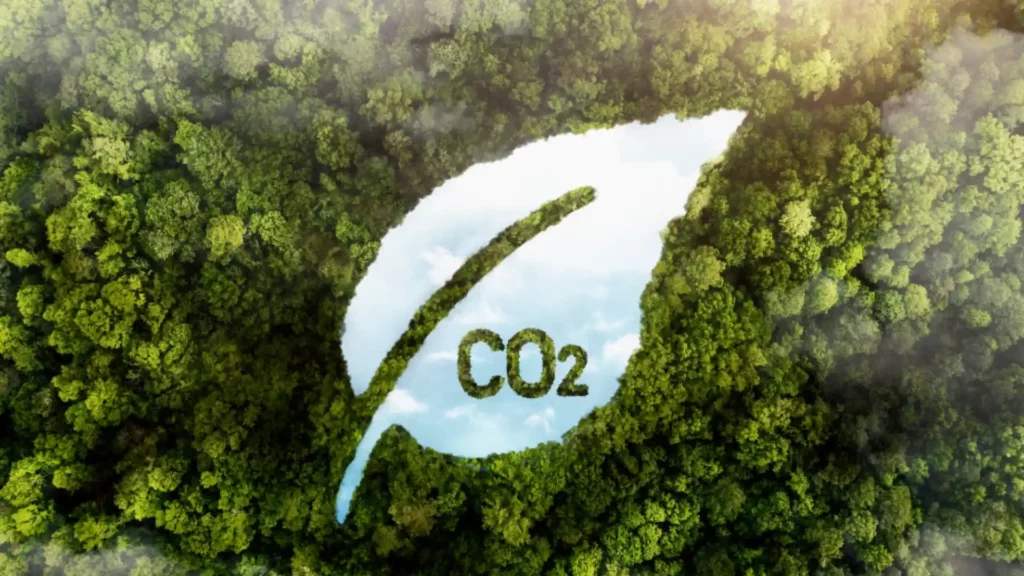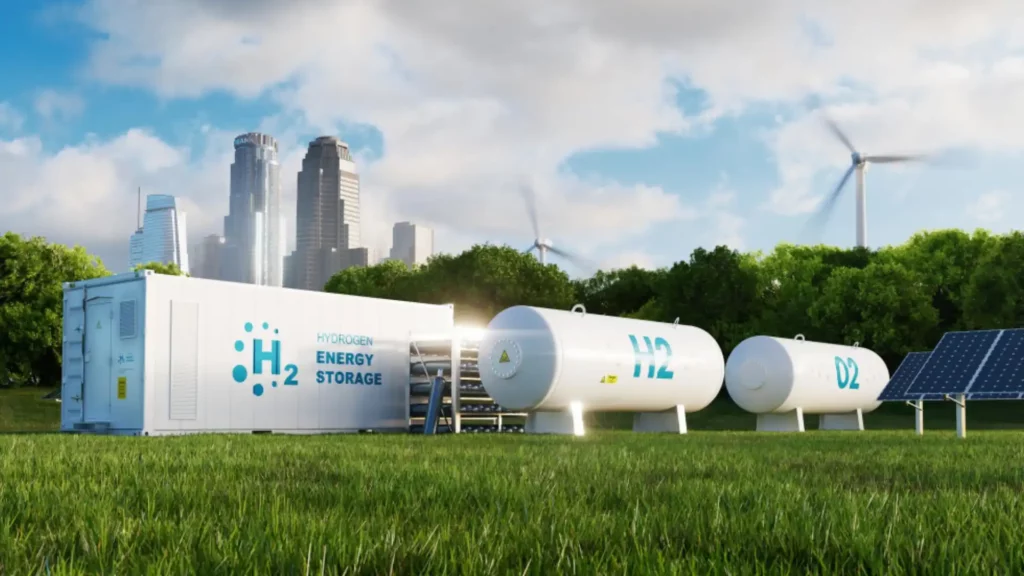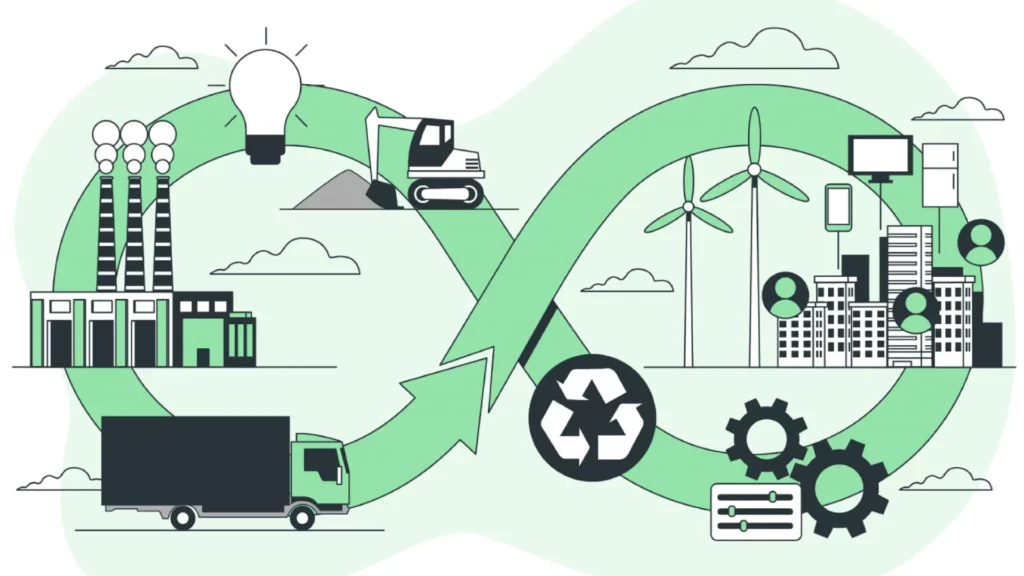Carbon Capture and Storage Projects
Carbon capture and storage (CCS) is a crucial technology in the fight against climate change. Carbon capture and storage projects involve the process of capturing carbon dioxide (CO2) emissions from sources like power plants and industrial processes, transporting it to a storage site, and depositing it where it will not enter the atmosphere, typically in underground geological formations.

The Importance of Carbon Capture and Storage Projects
Reducing Greenhouse Gas Emissions
Carbon capture and storage projects play a vital role in reducing greenhouse gas emissions. By capturing CO2 emissions at their source, these projects prevent the primary greenhouse gas responsible for global warming from entering the atmosphere.
Complementing Renewable Energy
While renewable energy sources are vital for a sustainable future, carbon capture and storage projects complement these efforts by addressing emissions from industries that are harder to decarbonize, such as cement and steel production.
How Carbon Capture and Storage Projects Work
Capture Technologies
There are several technologies used in carbon capture and storage projects. These include post-combustion capture, where CO2 is removed after fossil fuels are burned; pre-combustion capture, which involves converting fossil fuels into a gas before combustion; and oxy-fuel combustion, where fuel is burned in pure oxygen, resulting in a CO2-rich exhaust gas that is easier to capture.
Transportation of Captured Carbon
Once captured, the CO2 is compressed and transported to a storage site. Pipelines are the most common method of transporting CO2 in carbon capture and storage projects.
Storage Solutions
The final step in carbon capture and storage projects is storing the captured CO2. This is usually done in geological formations deep underground, such as depleted oil and gas fields or deep saline aquifers.
Global Examples of Carbon Capture and Storage Projects
The Boundary Dam Project in Canada
The Boundary Dam project in Saskatchewan, Canada, is one of the world's first and largest carbon capture and storage projects. It captures CO2 from a coal-fired power plant and uses it for enhanced oil recovery.
The Sleipner Project in Norway
The Sleipner project in the North Sea was the world's first offshore carbon capture and storage project. Operated by Equinor, it stores CO2 in a deep saline aquifer.
See Also Our Post On The Comprehensive Guide to Carbon Capture and Storage Conference

Challenges and Future of Carbon Capture and Storage Projects
Economic Viability
One of the main challenges facing carbon capture and storage projects is their economic viability. The cost of capturing and storing CO2 is currently high, although it is expected to decrease as technology advances.
Public Perception and Regulatory Hurdles
Public perception and regulatory hurdles can also impact the development of carbon capture and storage projects. Concerns about the long-term safety and effectiveness of CO2 storage need to be addressed through robust regulatory frameworks and public engagement.
Carbon Capture and Storage Facilities: Key Components in Climate Change Mitigation
Carbon capture and storage facilities are critical infrastructure in the global strategy to reduce atmospheric CO2 levels. These facilities are designed to efficiently capture carbon emissions at their source, typically large industrial plants or power stations, and then transport the CO2 to secure storage locations.
The Role of Carbon Capture and Storage Facilities
Carbon capture and storage facilities serve a dual purpose. Firstly, they act as a point of capture where CO2 is separated and collected from the industrial emissions. This process can be integrated into existing plants or built as part of new industrial installations. Secondly, these facilities act as the initial stage in the CCS chain, preparing the CO2 for safe transportation to storage sites.
Technology and Innovation in Carbon Capture and Storage Facilities
Advancements in technology play a pivotal role in the efficiency and feasibility of carbon capture and storage facilities. Innovations in capture methods, such as post-combustion and pre-combustion capture, as well as improvements in the materials and processes used, have the potential to significantly reduce the costs and increase the efficacy of CO2 capture.
Read Also Our Post On What You Need to Know Before Investing in CCS: The Pros and Cons of Carbon Capture and Storage

Challenges and Opportunities
The development and operation of carbon capture and storage facilities face several challenges, including high operational costs, public perception issues, and the need for specialized infrastructure for transportation and storage. However, these facilities offer substantial opportunities for reducing global greenhouse gas emissions, particularly in industries where direct emission reductions are challenging.
Future Outlook
The future of carbon capture and storage facilities looks promising, with ongoing research and development aimed at improving efficiency and reducing costs. As governments and industries increasingly focus on meeting climate goals, the role of carbon capture and storage facilities is expected to expand, making them a cornerstone in the fight against climate change.
Carbon Capture and Storage Hydrogen: Pioneering a Sustainable Future
The integration of carbon capture and storage (CCS) with hydrogen production represents a promising frontier in sustainable energy development. “Carbon capture and storage hydrogen” projects aim to produce hydrogen with minimal environmental impact, leveraging CCS technology to capture and store the carbon emissions typically associated with hydrogen production.
The Significance of Carbon Capture and Storage Hydrogen
Carbon capture and storage hydrogen projects are pivotal in achieving a low-carbon future. Hydrogen is a clean and versatile energy carrier, but its traditional production methods, mainly from natural gas, release significant amounts of CO2. Integrating CCS into hydrogen production processes ensures that these CO2 emissions are captured and stored, rather than released into the atmosphere.
Advancements and Challenges in Carbon Capture and Storage Hydrogen
Advancements in carbon capture and storage hydrogen technology are crucial for making this process economically viable and environmentally beneficial. The main challenges include reducing the cost of CCS technology and improving the efficiency of hydrogen production. Overcoming these challenges is key to unlocking the potential of hydrogen as a sustainable energy resource.
The Role of Carbon Capture and Storage Hydrogen in Energy Transition
Carbon capture and storage hydrogen projects are not just about producing cleaner energy; they are also about facilitating a broader transition to a sustainable energy system. By providing a low-carbon alternative for industries and transport sectors, carbon capture and storage hydrogen can play a significant role in reducing global greenhouse gas emissions.
Future Prospects
The future of carbon capture and storage hydrogen is linked with global efforts to combat climate change. As nations and industries invest in cleaner technologies, the role of carbon capture and storage hydrogen is set to grow, marking it as a key component in the transition to a sustainable energy landscape.
Check Also Our Post On A Success Story for Carbon Capture and Storage Technology, What is is Carbon Capture Usage

Overview of Carbon Capture and Storage Projects 2021
The year 2021 marked a significant period in the advancement of carbon capture and storage (CCS) technology, with numerous carbon capture and storage projects 2021 launching or reaching critical stages of development. These projects are vital in the global effort to reduce greenhouse gas emissions and combat climate change.
Key Developments in Carbon Capture and Storage Projects 2021
During 2021, a diverse range of carbon capture and storage projects emerged across the globe, reflecting the growing recognition of CCS as a crucial component of climate action strategies. These projects varied in scope and scale, targeting emissions from various sources including power plants, industrial processes, and even direct air capture.
Notable Carbon Capture and Storage Projects 2021
One of the hallmark features of carbon capture and storage projects 2021 was their geographic and sectoral diversity. Projects were not only located in traditional energy-producing regions but also in areas with high industrial emissions. This trend indicates a broadening acceptance and application of CCS technology worldwide.
Challenges and Achievements
Despite facing challenges such as funding, public perception, and technological hurdles, carbon capture and storage projects 2021 demonstrated significant advancements in CCS technology. These projects showed improvements in capture efficiency, cost-effectiveness, and storage safety, paving the way for more ambitious CCS initiatives in the future.
The Road Ahead
The progress made in carbon capture and storage projects 2021 sets a strong foundation for future developments in this field. It highlights the growing momentum behind CCS as an essential tool in achieving global carbon reduction targets and provides valuable lessons for upcoming projects in terms of technology, policy, and public engagement.

Advancements in Carbon Capture Storage Projects
In recent years, carbon capture storage projects have emerged as a key solution in mitigating climate change. These projects involve the process of capturing carbon dioxide emissions from sources like power plants and industrial facilities, and storing it underground to prevent it from entering the atmosphere.
The Role of Carbon Capture Storage Projects in Environmental Sustainability
Carbon capture storage projects play a crucial role in the global effort to reduce greenhouse gas emissions. By capturing CO2 before it is emitted into the atmosphere, these projects significantly lower the carbon footprint of industrial and energy-producing activities. This makes carbon capture storage projects an essential component in strategies aimed at achieving long-term environmental sustainability.
Technological Innovations and Challenges
The success of carbon capture storage projects largely depends on technological advancements. Innovations in capture techniques, storage methods, and overall efficiency are continually being developed. However, these projects also face challenges, such as high operational costs and the need for extensive infrastructure, which must be addressed to increase their viability and effectiveness.
Global Impact of Carbon Capture Storage Projects
Carbon capture storage projects have a global impact, offering a viable solution for countries seeking to meet their carbon reduction commitments. The implementation of these projects varies worldwide, reflecting different geographical and industrial contexts. However, the universal goal remains the same: to significantly reduce greenhouse gas emissions through efficient and effective carbon capture and storage.
The Future of Carbon Capture Storage Projects
Looking forward, carbon capture storage projects are expected to become more prevalent and technologically advanced. As the world increasingly focuses on combating climate change, these projects will likely receive more attention and investment, driving further innovations and efficiencies in this crucial field.
The Emergence of Offshore Carbon Capture and Storage
Offshore carbon capture and storage (CCS) represents a significant advancement in efforts to mitigate climate change. This approach involves capturing carbon dioxide emissions from industrial sources and transporting them to offshore storage sites, typically deep under the seabed, where they can be securely and permanently stored.
The Importance of Offshore Carbon Capture and Storage
Offshore carbon capture and storage offers several advantages over traditional, land-based CCS. These include the vast storage capacity available under the sea, potentially reduced environmental impact on land, and the proximity to major industrial coastal areas, which minimizes transportation challenges. The development of offshore carbon capture and storage is seen as a critical step in achieving global carbon reduction targets.
Challenges and Innovations in Offshore Carbon Capture and Storage
Despite its potential, offshore carbon capture and storage faces unique challenges. These include the technological complexities of operating in marine environments, higher costs compared to onshore projects, and regulatory hurdles. However, ongoing research and technological innovations are progressively overcoming these barriers, enhancing the feasibility and efficiency of offshore CCS projects.
Notable Projects and Future Prospects
Several pioneering offshore carbon capture and storage projects have been initiated around the world, showcasing the practicality and effectiveness of this approach. These projects serve as valuable models for future endeavors and are crucial in driving forward the development of offshore CCS technology.
The Role of Offshore Carbon Capture and Storage in Climate Action
Offshore carbon capture and storage plays a vital role in the broader strategy to combat climate change. By providing an alternative solution for carbon storage, particularly for regions with limited onshore storage capacity, offshore CCS significantly contributes to the diversification and enhancement of global carbon capture and storage capabilities.
Conclusion: The Role of Carbon Capture and Storage Projects in Climate Action
Carbon capture and storage projects are essential in the global effort to combat climate change. While they are not a silver bullet, they are an important part of a broad strategy to reduce greenhouse gas emissions, especially in sectors where other mitigation options are limited. As technology advances and costs decrease, carbon capture and storage projects are likely to become a more prominent part of our global response to climate change.
Sources:
Carbon Capture, Utilisation and Storage
The current scope and stand of carbon capture storage and utilization ∼ A comprehensive review

